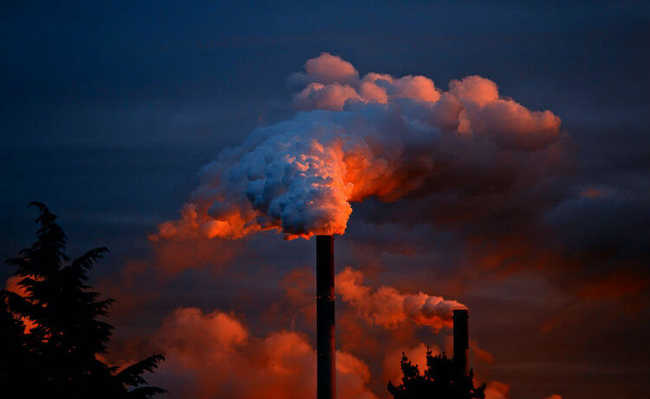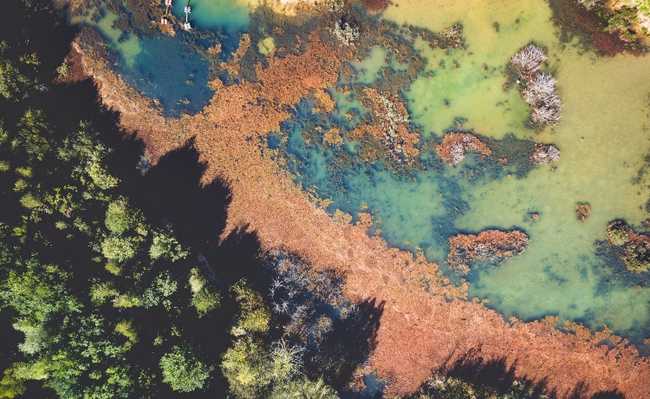Discreetly dangerous: understand what fugitive emissions are
Previously unnoticed, fugitive emissions cause great concern as they are difficult to control

Fugitive emissions are part of an issue that has attracted increasing interest from the industry. They are a type of unintentional emission that comes from pipes, leaks and even underground ducts. Fugitive emissions releases are diffuse and they can be formed by solid, liquid or gaseous matter.
- What is air pollution? Know causes and types
To better understand what fugitive emissions are and what methods to avoid them, it is worth remembering some concepts, such as "atmospheric emissions", in addition to knowing the types of emission sources.
The process of emitting a gas consists of releasing it into the atmosphere, allowing its particles to enter into circulation. Emissions can occur naturally or be derived from human activity, that is, resulting from human activities. The emitting sources, on the other hand, can be classified as punctual and diffuse.
Point sources are easily located, as they have control and direction mechanisms for the pollution flow that is emitted, that is, the gases released depart from a specific point, such as a chimney or an exhaust, for example.
On the other hand, diffuse (or non-point) sources do not have mechanisms for controlling and directing the flow of gases, which makes it difficult for them to locate, control emissions and the destination of the gases emitted. These are the sources causing the fugitive emissions, which we are now able to discuss. Learn more about what air emissions are and what their sources are.
Fugitive emissions: what they are and where they come from
Resolution 382/2006 of the National Environmental Council (Conama) defines fugitive emissions as diffuse releases into the atmosphere of any form of solid, liquid or gaseous matter, carried out by a source that does not have a device designed to direct or control its flow. In other words, fugitive emissions come from diffuse emission sources. According to the United States Environmental Protection Agency (EPA), these emissions are unintentional and come from pipes and equipment leaks on sealed or impermeable surfaces, and even from underground pipelines.
Despite Conama's definition of fugitive emissions, with regard to atmospheric emissions, the term is commonly used to refer to diffuse releases of volatile organic compounds (VOCs) into the atmosphere, that is, any organic compound that undergoes photochemical reactions in the atmosphere. VOCs react in the atmosphere forming mainly ozone (O3), which despite being beneficial when in the stratosphere (where the ozone layer forms), can be extremely harmful to health and the environment when it is concentrated in the troposphere (the atmospheric layer where we live).
Much of the fugitive emissions occur through leaks in pumps, compressors and valves in industrial plants. In addition to the fact that such leaks are harmful to the environment, the leakage of products can generate financial losses for industries, requiring a method to reduce fugitive emissions, minimizing this type of material loss to the atmosphere.
The United States was the first to establish a control over fugitive emissions from the beginning of the Clean Air Act, in 1970, promoted by the EPA. For monitoring emissions, the "Method 21" (or EPA 21) was developed, which uses a portable gas analyzer suitable for application in environments with explosive atmospheres. The Leakage Detection and Repair Program was also created (LDAR-Leak Detection and Repair), which consists of detecting and repairing any leaks.
As the equipment is repaired, new measurements are taken to verify the efficiency of maintenance. The concentrations analyzed are generally obtained in the unit ppm (part per million), which, depending on the hazardousness and toxicity of the compound, can be considered a relatively high value, and, in certain cases, it can pose a risk to workers and facilities.
The EPA also suggests some precautions to reduce VOC emissions (read more in the article "VOCs: know volatile organic compounds").
A study carried out by the Federal University of Rio de Janeiro (UFRJ) identified the extraction, transport of oil and natural gas as some of the main activities causing fugitive emissions.
The oil and natural gas industry is also a major generator of fugitive emissions of greenhouse gases (read more about global warming), which can emit carbon dioxide (CO2), methane (CH4) and nitrous oxide (N2O). The Environmental Company of the State of São Paulo (Cetesb) provides reference reports (inventories) on greenhouse gas emissions in various economic sectors (among them the petrochemical industry).
A report made available by the Intergovernmental Panel on Climate Change (IPCC) points out some activities considered major generators of fugitive emissions, such as fugitive emissions of fossil fuels (by burning), mining and handling of coal, in addition to emissions generated in processes subsequent to the mining, and coming from underground or surface mines that are abandoned after the ore is extracted.










